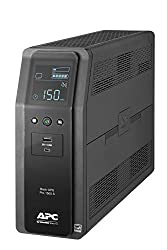Apparently, I live under a rock. At least that’s how I felt upon learning about backup power sources. Translation: something I could plug my router into and have Internet access when the power went out.
You might be thinking, really? You didn’t know such a thing exists?
Not really. Even while living in an area with somewhat unpredictable weather—New England—losing power for an extended period of time doesn’t happen that often. An hour or two maybe once a year. A day or more, not so much.
This past fall, there was a not so much. And I learned this from, of all people, a solar energy expert.
Working-from-home vs. home-based businesses
The primary difference between the two is that when there’s a power outage, most people who work for a company and work remotely are still getting paid. Sure, you are still responsible for getting your work done. Yet if you’re a salaried person, you will get paid.
For many home-based businesses—particularly freelancers who charge an hourly rate—you don’t work, you don’t get paid. That’s why you always need a Plan B.
What’s your Plan B
For yours truly, Plan B is having alternative locations available to work. Case in point, we lost power for three days in October. My Plan B was my mother’s house, which still had power and heat.
Uprooting from your home base can be disrupting. People who work from home are usually creatures of habit. That’s why the backup battery/power source sounded so appealing. Especially for non-homeowners who may not have the funds or need to invest in a backup generator.
Other backups
The other thing people who work from home are notoriously bad at is preparing for an IT disaster. And by disaster that covers any time you can’t use your primary computer. Even if said computer is just in the shop for a tune-up.
With Google Drive, OneDrive, DropBox, you have the means to keep things off your hard drive so you can work while your computer is being serviced or is down. All you need is another PC. Those can be easy to come by via Craig’s List, Facebook Marketplace or other sources. Yours truly received a Chromebook just for signing up for Verizon Fios service. Tempting as the thought of selling this PC was, the value of the unit—about $230—was very small in comparison to what losing a day’s work would cost me.
Back to the backup
So, if you want to prepare for the worst—a day or more without power—a backup source like this Powkey unit you can find on Amazon is not a bad way to go (affiliate link).
If you want to shop around a bit, the New York Times ran a column reviewing their picks for backup power sources. Unfortunately, their top pick, CyberPower CP900AVR AVR UPS System, 900VA/560W, 10 Outlets, Mini-Tower, is currently unavailable. It might be worth checking around on other sites.
Another top choice, APC UPS 1500VA Sine Wave UPS Battery Backup, BR1500MS2 Backup Battery Power Supply with AVR, (2) USB Charger Ports, is currently available. You find out more by clicking here (affiliate link).
To read the entire New York Times review, click here.
That’s it for this week’s My HOH. What better way to end than with a cliché?
Those who fail to plan, plan to fail.
I don’t particularly like that one. More appropriately, even when you work from home, stuff happens. If it happens more than once, it’s really on you.
If you haven’t yet signed up, please subscribe to My Home Office Hacks. We’ll grace your in-box every Monday morning.
And as always, please share. We’ll love you for it.





Great advice. I still find it funny how lot's of people don't think about cloud solutions and digital backup. The Chromebook solution is also great. Here's a good one liner joke about backup: https://devrant.com/rants/146818/jesus-saves-but-buddha-makes-incremental-backups
Good one. Only resource not noted – Panera Bread, where the lights are usually on and the bread is sometimes warm. Steve